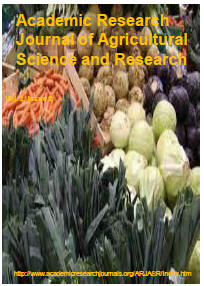| ARJASR |
Academic Research Journal of
Agricultural Science and Research |
||||||||||||||||||||||
|
Academic Research Journal of Agricultural Science and Research Vol. 2(1), pp. 22-33, April, 2014. DOI: 10.14662/ARJASR2014.013 ISSN: 2360-7874 ©2014 Academic Research Journals Full Length Research Changes of Soil Inorganic N, Soil Organic C and N Uptake by Maize and Soybean under Different Intercropping Patterns in Embu West and Tigania East Counties of Central Kenya
Jossias Mateus Materusse Matusso1, Jayne Njeri Mugwe1, Monicah Mucheru-Muna1
1Agricultural Resources Management Department, Kenyatta University (KU), Nairobi, P.O. Box 43844 -00100, Kenya. Corresponding author’s Email: matujossias@gmail.com
Accepted 18 April 2014
In the central highlands
of Kenya, low soil fertility is one of the major constraints causing
decreased maize production and other staple food and income
generating crops. The purpose of this study was therefore to
determine the effects of maize-soybean intercropping patterns on
soil inorganic N, soil organic C and N uptake by maize and soybean.
The effects of conventional=1M:1S,MBILI-MBILI=2Maize:2Soybean;
2Maize:4Soybean, 2Maize:6Soybean and two sole crops of maize and
soybean were investigated during two seasons (2012 Long Rains and
2012 Short Rains) at Embu and Meru Counties, using a randomized
complete block design (RCBD) with four replications. At Embu, during
2012 LR, the MBILI and 2M:4S treatments observed significantly the
lowest N03- - N content (8.24 mg kg-1 and 9.15 mg kg-1,
respectively); whereas at Kamujine, the sole soybean treatment
recorded statistically the highest N03- - N content (8.24 mg kg-1).
At Kamujine the sole soybean treatment recorded statistically the
highest (12.84 mg kg-1) soil Inorganic N. The N uptake by maize and
soybean was significantly affected by the intercropping patterns and
it was positively correlated with soil mineral N, at both sites
during the sampling period. At Kamujine, theSOC was significantly
affected by the intercropping and the conventional treatment
recorded the highest value of 2.46%.
|
|
|||||||||||||||||||||
